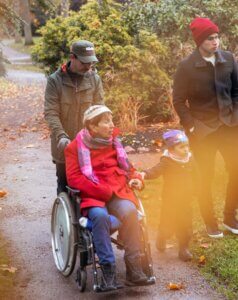For those dying under 70 years of age, frailty trajectories have increased for 40 years before their death
Individuals’ frailty increases as they age and their risk of dying. Yet, it is less clear whether frailty trajectories and speed differ by age at death and mortality. To explore this, the following NEAR-based studies were used: A Longitudinal Study of Gender Differences in Health Behavior and Health among Elderly (GENDER), the Origins of Variance in the Oldest-Old: Octogenarian Twins (OCTO-Twin), and the Swedish Adoption/Twin Study of Aging (SATSA). A multidimensional frailty index developed by Rockwood & Mitnitski* was used to measure the accumulation of health deficits in the medical, physiological, and psycho-social domains.
For those dying under 70 years of age, frailty trajectories have increased for 40 years before their death
As compared to those who died after 70 years of age, those who died at 70 years or younger had increased levels and rates of frailty from 30 years of age onwards. Those who died above 90 years of age showed increased frailty rates first at around 75 years of age. Moreover, higher levels of frailty were independently associated with an increased risk of dying, while the rate of increase in frailty was not. In conclusion, in terms of the age of death, these findings emphasize the importance of close monitoring of frailty, especially in middle-aged and younger-old adults.
Publication
Bai G, Szwajda A, Wang Y, Li X, Bower H, Karlsson IK, Johansson B, Dahl Aslan AK, Pedersen NL, Hägg S, Jylhävä J. Frailty trajectories in three longitudinal studies of aging: Is the level or the rate of change more predictive of mortality? Age and Ageing. 2021;50(6): 2174-2182. https://doi.org/10.1093/ageing/afab106
*Rockwood K, Mitnitski A. Frailty in relation to the accumulation of deficits. J Gerontol A Biol Sci Med Sci. 2007; 62: 722–7.











